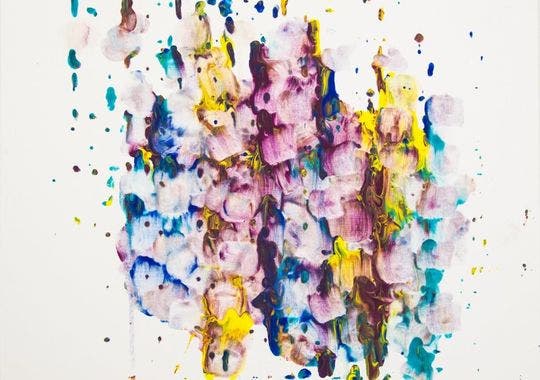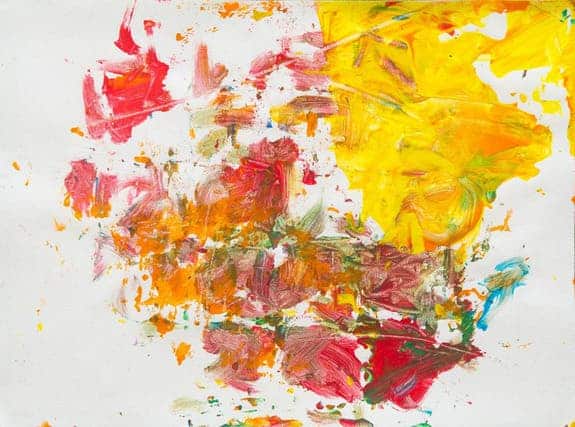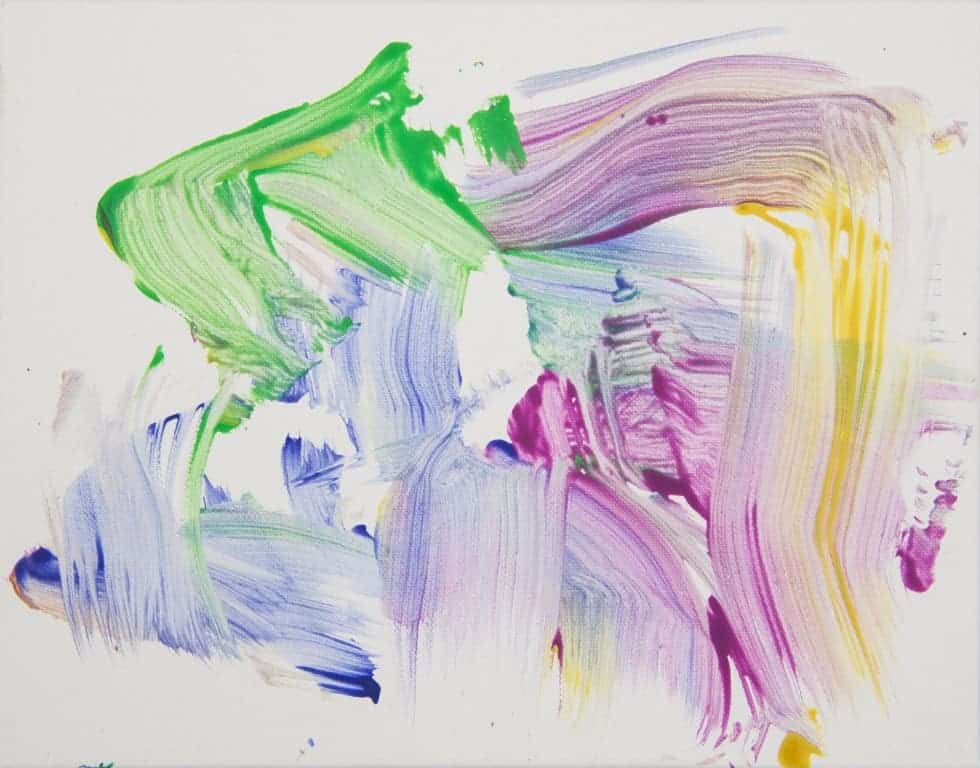The Humane Society of the United States (HSUS), recently initiated a bold and creative project in which they enlisted six member organizations of the North American Primate Sanctuary Alliance. HSUS asked the organizations if they would each submit a piece of art made by chimps belonging to their respective sanctuaries. In the end, some pretty creative and expressive pieces of art were submitted. The winning piece was authored by the most eccentric of the chimp artists, being painted through a technique using the tongue only.

The winning entries were chosen only last week, after more than 27,000 people voted their favorites online, and topping the list was the art made by Brent, a 36-year-old chimp who paints only with his tongue. His sanctuary, Chimp Haven of Louisiana, won a grant of $10,000 from The HSUS. Jane Goodall, famed primatologist and U.N. Messenger of Peace, was also part of the judging panel.
“All of the art was beautiful and unique, just like chimpanzees!” Goodall said. “It was difficult to choose. It’s so important that the public support all of these sanctuaries in their mission to provide exceptional care to chimpanzees, and other primates, who have suffered through so much.”
Cheetah, of Save the Chimps in Florida, came in at second with his meticulous work. His entry was also Goodall’s favorite out the bunch. The chimp’s sanctuary was awarded $10,000.Ripley of the Center for Great Apes in Florida won third prize, for a $2,500 grant, followed by paintings by Jamie of Chimpanzee Sanctuary Northwest, Jenny of Primate Rescue Center, and Patti of Chimps, Inc., convey the unique style of each chimpanzee.

There’s more to the project than just showcasing cute and amazing chimpanzee art or rewarding the sanctuaries that care for them. The project seeks to raise awareness on the dire conditions these chimps were forced to during their past ‘careers’ as research chimps or in the entertainment industry. Brent, Cheetah, Jenny and Jamie were all used in biomedical research. Cheetah had it the worst of all – 19 years of medical research and in that time had more 400 liver biopsies, according to his sanctuary, Save the Chimps in Fort Pierce, Fla., which is home to 261 chimpanzees.

Recent advances in medicine, like in-lab culturing of organs from adult stem cells and computer models have significantly reduced the number of research on chimps – ideal animal models since they share 98.5% of their DNA with humans. Still, there are many yet employed in research. In all good faith, most scientists appreciate, while admitting research made on them is cruel, that the chimps are still indispensable to research of treatments that could save thousands if not in some cases millions of lives.
The National Institutes of Health is set to retire more than 300 chimpanzees soon, while the U.S. Fish & Wildlife Service has recently proposed the listing of chimps as endangered under the Endangered Species Act. If the proposal passes, then chimps would be out of the labs for the good.
As for the artworks, these will be auctioned off and the proceeds will benefit the North American Primate Sanctuary Alliance .
“We cannot thank these sanctuaries enough for providing their chimpanzee residents with such peaceful and enriching lives. They deserve the public’s support for the amazing work they are doing and will continue to do as hundreds more chimpanzees make their way to retirement after decades in laboratories,” said Kathleen Conlee, vice president of animal research issues at the HSUS.
You can view all of the entries here.






